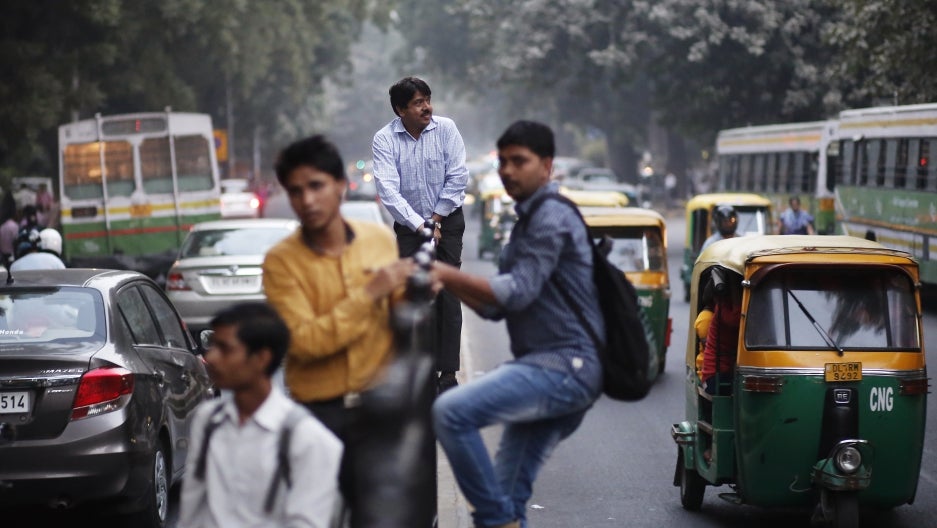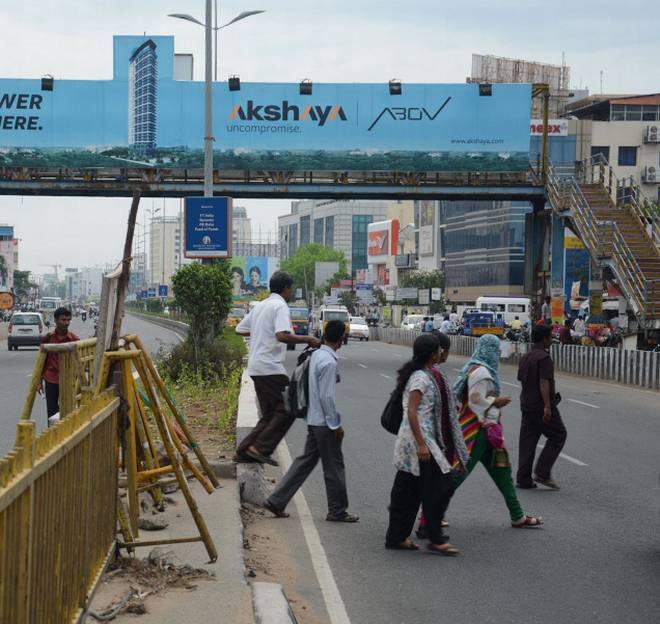 Pedestrians atop a fence to cross a busy road in New Delhi, India. Credit: Anindito Mukherjee/Reuters
Pedestrians atop a fence to cross a busy road in New Delhi, India. Credit: Anindito Mukherjee/Reuters
Road safety is a critical development priority for South Asia, impacting health, wellbeing and economic growth. Countries in the region must work together if they are to achieve the goal of halving road crash deaths by 2030. This blog is part of our Together for Road Safety campaign.
Have you ever seen a person die on the road? Hit by a speeding vehicle, flung into the air, lying motionless in a pool of blood? I have. It was terrifying. That could have been me if I was in the wrong place at the wrong time.
Road crashes have become so commonplace that they hardly evoke any reaction in us anymore. In 2019 alone, India lost over 150,000 lives to road crashes, that’s one person dead every three minutes. By the time you finish reading this article, two people would have died a ghastly death.
In 2015, India signed the Brasilia Declaration with a goal to reduce road deaths by 50 percent in five years. By 2019, the number increased by three percent. The worst statistic of them all: the number of pedestrians killed every day doubled from 34 people in 2014 to 70 people in 2019.
These are not just numbers – they are real human lives that are no more. No statistical record can put a price on the unmeasurable emotional cost that the families of victims incur. The largest section of these victims are also breadwinners for their families. Every one of these deaths impacts several other lives.
The real issues with road safety in India
There is a disconnect in the way we design our streets and the way we want our drivers to behave. You may have often come across road signs which read: “Speed Thrills But Kills”. But if we want people to drive slower, why do we design streets as racing tracks? Why do we have highways within cities that become barriers for people to cross? How can we think of foot over-bridges and underpasses as convenient for pedestrians when they have to climb up and down a two-storey structure every time they wish to cross roads? Or are they meant for cars to move fast and uninterrupted? Why is an attempt to even slightly widen footpaths seen as an encroachment on space that “rightfully” belongs to motorists?
How can streets be safer?

Cities need to envision streets that ensure safe and comfortable movement for pedestrians and cyclists. Cities must stop pumping ever-increasing amounts of money into wasteful and dangerous urban highways, elevated roads, and pedestrian over bridges and pedestrian underpasses whose sole purpose is fast and unhindered movement of motor vehicles.
Instead, cities should start investing in people-centric solutions : wide, comfortable, and accessible footpaths; frequent and safe street-level crossings; a well-connected network of protected cycle lanes; uniform carriageways that streamline vehicle movement; pedestrian- and cycle-priority zones through traffic-calming and motor vehicle restrictions, among others.
Interventions that prove change is possible
After decades of car-oriented planning, changing the course might seem impossible. But recent national programmes—the Streets for People Challenge and the India Cycles4Change Challenge—are proving otherwise. The national government has set an ambitious target of transforming over 10,000 kilometers of streets prioritizing walking and cycling and getting over 100 million cycles on the ground. As its knowledge partner, the India Programme of the Institute for Transportation and Development Policy is guiding and assisting over 100 Indian cities that have embarked on this journey of transformation.
People are at the core of this process. Cities conducted surveys to gather citizen’s inputs on barriers to walking and cycling. Cities are testing quick and innovative interventions like protected cycle-lanes, vehicle-free zones, public spaces, and community cycle sharing schemes , among others. Cities are crowdsourcing ideas from thousands of designers through design competitions. Cities are learning from their own experiments and the experience of other cities and scaling successful ideas to make cycling and walking safe and fun for everyone.

While this is a great start, there is a long way to go for Indian cities to become safe for all its citizens. No goal is too ambitious, and even one death due to road crashes is one death too many . We must reimagine the way we plan our cities. Designing cities for people rather than cars can ensure that our streets are full of life, not deaths.



Join the Conversation